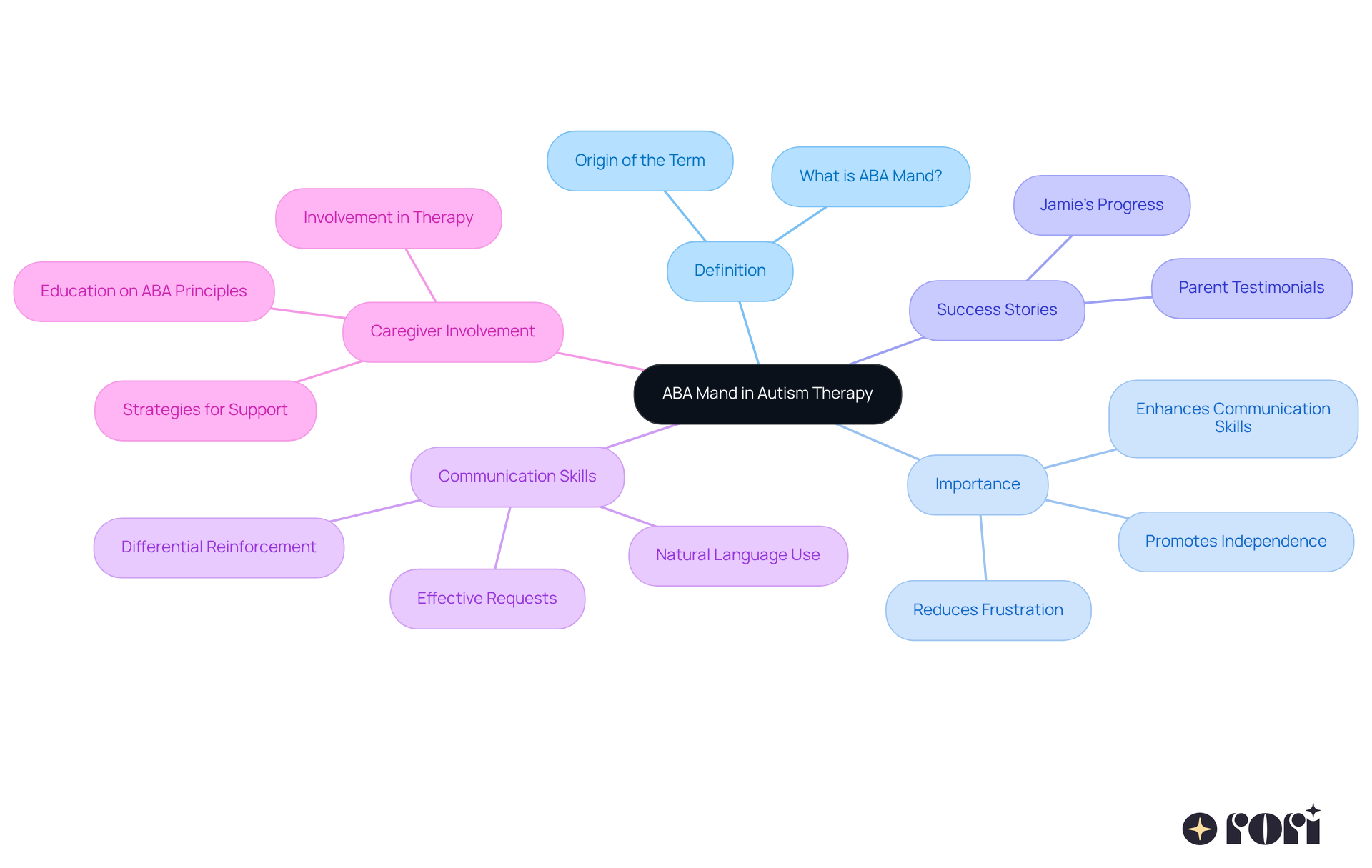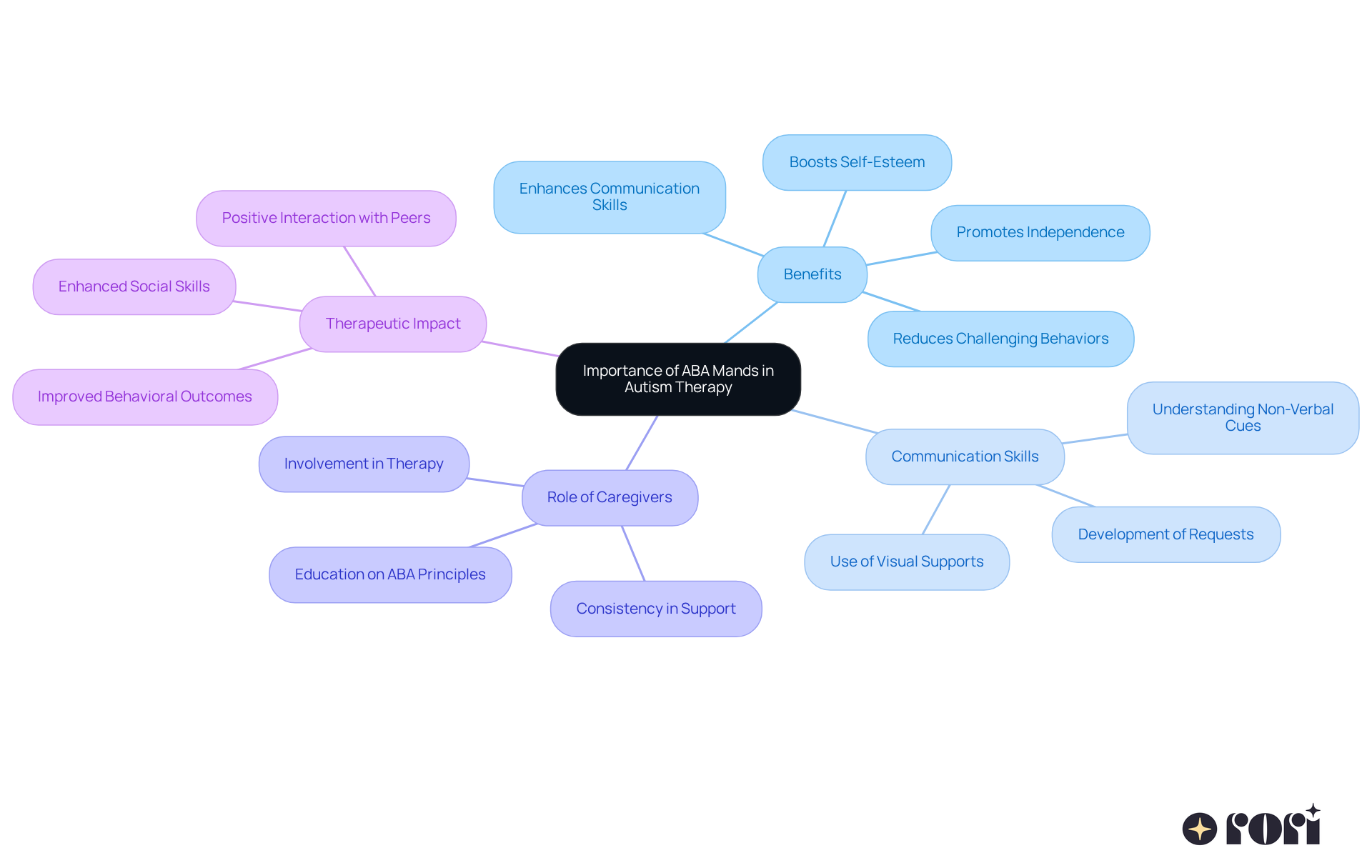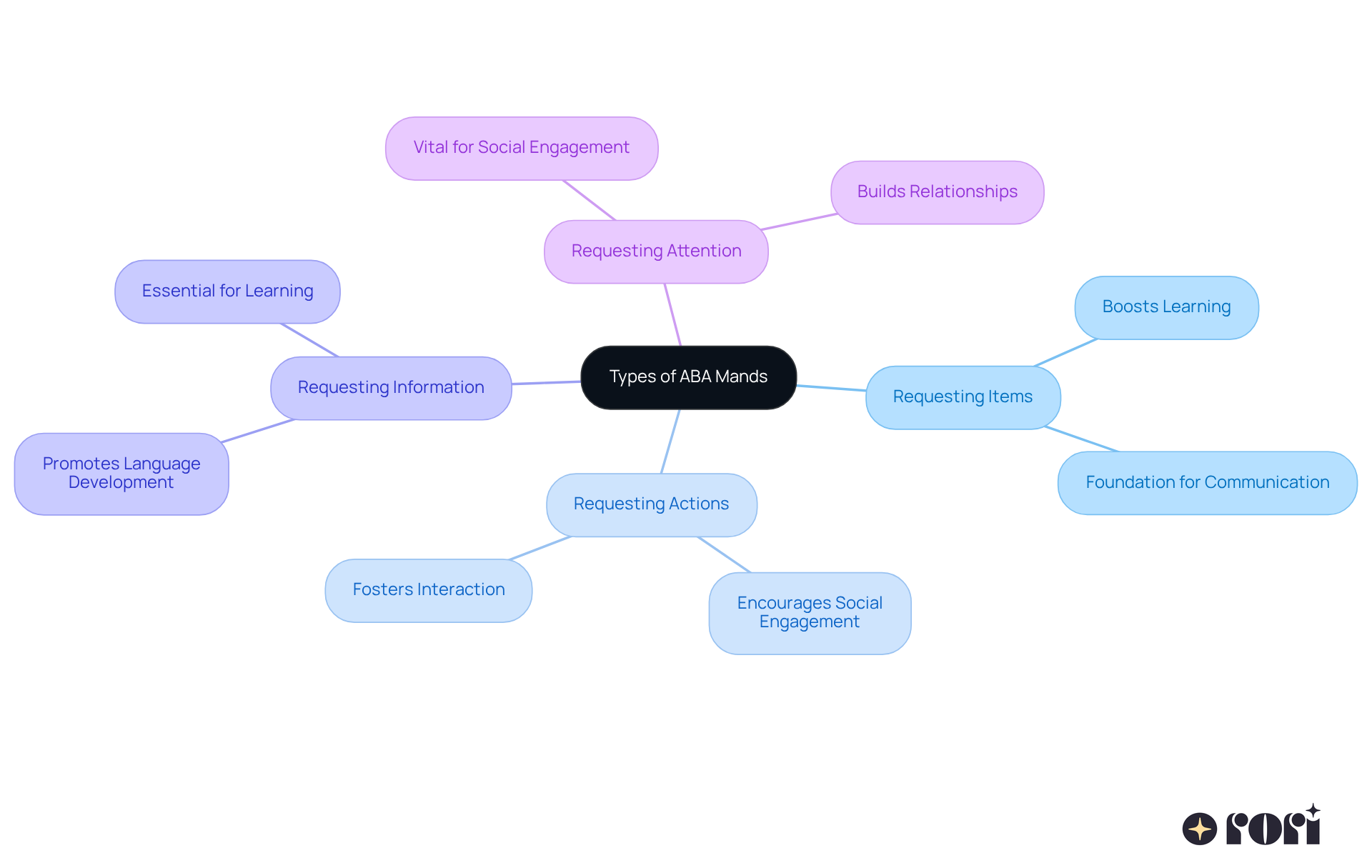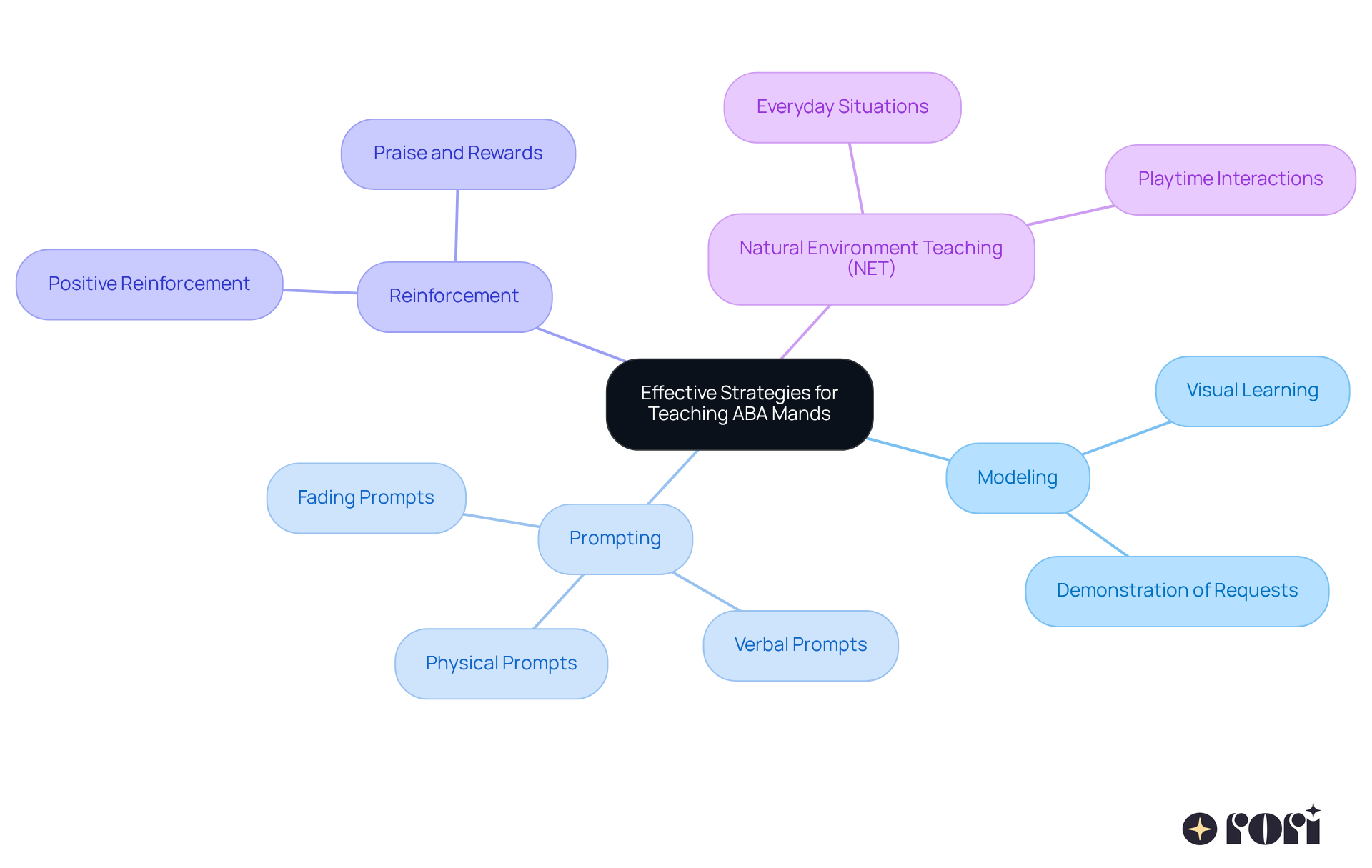This article highlights the importance of ABA mands in autism therapy, focusing on how they help children effectively communicate their needs. By teaching these request-based verbal behaviors, therapists can enhance children's communication skills, reduce frustration, and encourage independence. Success stories and research showcase the positive outcomes of ABA mand training, making it a valuable tool for families.
Let’s explore this together! Imagine a child who can express their needs clearly—what a difference that makes! By working on these skills, children not only feel more empowered but also experience less frustration. With the right support, they can thrive and gain confidence in their ability to communicate.
We’re here to help you every step of the way! If you’re curious about how ABA mand training could benefit your child, consider reaching out to a professional. Together, we can navigate this journey and find the best resources for your family!
Understanding the intricacies of communication is vital, especially for children with autism, where expressing needs can often become a challenge. The concept of ABA mand, a fundamental component of Applied Behavior Analysis, emerges as a powerful tool in fostering independence and reducing frustration. As caregivers and therapists explore the nuances of ABA mand training, they uncover not only the potential for enhanced communication skills but also the profound impact it can have on a child's social interactions and overall development.
How can mastering this essential verbal behavior transform the therapeutic journey for children with autism and their families? Let’s explore this together! We’re here to help you every step of the way!
An aba mand, which comes from applied behavior analysis (ABA), is a special type of verbal behavior where a person makes a request for something they want, like items, activities, or help. Aba mand is super important in autism therapy because it helps children express their needs, which promotes independence and reduces frustration. By focusing on aba mand training, therapists can enhance kids' communication skills, which are essential for social interactions and daily activities.
Behavior analysts highlight the importance of aba mand, emphasizing that effective requests boost overall communication skills and improve understanding between children with autism and their caregivers. There are some heartwarming success stories from aba mand training. For example, one young learner who used to cry for things can now confidently say, 'juice please.' This change not only expands their vocabulary but also brings immense joy to parents, who often feel like they've hit the jackpot when their child independently asks for something.
Teaching kids how to make requests, or aba mand, is crucial for developing communication skills in children with autism, ADHD, and other behavioral challenges. Research shows that aba mand training helps kids use language more naturally, leading to better social interactions. By reinforcing requests with prompt rewards, children are motivated to express their needs assertively, laying a solid foundation for their future independence. As behavior analysts note, understanding and using aba mand training is essential for creating personalized plans that cater to each child's unique expressive needs. Plus, early intervention in ABA mand therapy is vital, as it significantly enhances communication and life skills for children with autism. The use of differential reinforcement of aba mand also expands the communication tools available to children, improving their ability to make effective requests.
Equipping caregivers with ABA principles and strategies is essential for supporting their children's behavioral goals. Educating caregivers boosts support, informed decision-making, and ultimately leads to better behavioral outcomes. By involving caregivers in the therapeutic process, families can foster a more consistent and effective approach to addressing behavioral challenges, ensuring that children receive the comprehensive support they need for their growth. Let’s explore this together!

ABA mand requests are truly essential in autism therapy, serving as a bridge to effective interaction. When young ones learn to express their needs through requests, they often see a significant drop in challenging behaviors like tantrums and aggression, which can arise from frustration during interactions. By teaching these requests, known as aba mand, children not only boost their ability to engage with their environment but also enhance their connections with peers and caregivers, nurturing vital social skills.
This empowerment in communication is crucial for building self-esteem and promoting independence in individuals with autism. For instance, kids who successfully use requests can articulate their wishes, leading to more positive interactions and a greater sense of control over their surroundings. Therapists emphasize that developing these requests, which can be viewed as an aba mand, significantly supports a child's overall growth, enabling them to navigate social situations with confidence and clarity.
Moreover, caregiver education is a key component of this journey. When caregivers understand ABA principles and strategies, they can offer better support at home, complementing professional interventions and ensuring consistency. This informed approach, which utilizes the concept of aba mand, directly influences the success of teaching requests, resulting in improved behavioral outcomes.
Case studies show that children who effectively utilize requests can express their desires, fostering more favorable interactions and an increased sense of control. The growth of communication skills plays a vital role in a child's overall development, allowing them to approach social situations with assurance and understanding. Let’s explore this together! We’re here to help you every step of the way!

In ABA therapy, the use of aba mand requests plays a crucial role in enhancing communication skills for individuals with autism. Applied Behavior Analysis (ABA) is a therapy that adapts to each child's unique needs, utilizing the science of learning and behavior. Let's dive into the primary categories of mands:
Each type of aba mand can be effectively taught using tailored strategies that align with the child's unique needs and preferences. For instance, utilizing motivating operations (MOs) and prompt fading techniques can significantly improve the likelihood of successful manding. Research indicates that 67% to 80% of participants can generalize their skills in aba mand to new situations, highlighting the effectiveness of mand training. Moreover, requests can serve as a substitute for problem behavior, reducing unwanted actions previously used to express needs. Understanding the nuances of each mand type is essential for developing effective teaching methods that cater to individual communication goals, ultimately leading to improved behavioral outcomes and empowered caregivers. Let’s explore this together!

Teaching ABA mands can be a rewarding journey, and there are several strategies that can make it effective:
Modeling: Imagine watching someone demonstrate how to ask for something—this is what modeling is all about! When a therapist shows a child how to use aba mand in context, such as saying, 'Can I have the red car?' it helps them learn visually. It’s amazing how studies show that organized methods like modeling can really boost communication skills in kids with autism, leading to better social interactions. Empowering our young ones with these skills is so important for their independence!
Prompting: Think of prompting as a gentle nudge. By giving verbal or physical signals, we can encourage children to make requests. At first, prompts might be straightforward, like asking, 'What do you want?' But as they gain confidence, we can gradually fade those prompts. It’s encouraging to know that about 88% of youth in ABA mand therapy show significant improvements in social and communication skills—proving how effective prompting can be! Plus, when caregivers actively participate, it can make a world of difference in outcomes.
Reinforcement: Positive reinforcement is like a cheerleader for mands! When a child successfully uses a mand, praising them or giving them what they asked for reinforces that behavior. For example, if a child requests a snack using a mand, they should receive the snack along with some encouraging words. Therapists often highlight that positive reinforcement is a cornerstone of ABA mand therapy, which leads to better behavioral results.
Natural Environment Teaching (NET): Incorporating aba mand into everyday situations is a fantastic way for kids to practice their skills. Picture this: during playtime, encouraging a child to ask for a toy they want creates natural opportunities for interaction. Research shows that NET can significantly enhance interpersonal skills, making it a crucial part of effective ABA therapy. This approach not only supports the child’s growth but also empowers caregivers to be actively involved in their learning journey.
By using these strategies, therapists and parents can create a nurturing learning environment that fosters effective communication. It’s all about helping our kids articulate their needs and empowering families to provide the right support at home. Let’s explore this together and ensure better outcomes for our children!

Understanding the significance of ABA mands in autism therapy truly highlights just how essential communication is for fostering independence and reducing frustration in our children. When kids learn to articulate their needs, they can navigate their environments more effectively, leading to better social interactions and an improved quality of life.
This article shines a light on the role of ABA mands in enhancing communication skills. It shows us that effective requests can help reduce challenging behaviors and boost self-esteem. Through different types of mands—like requesting items, actions, information, and attention—children are empowered to express themselves. And let’s not forget, caregiver involvement is crucial! By reinforcing these skills at home, we can make a real difference. Strategies such as:
are key tools that help teach these requests, ensuring our children get the support they need to thrive.
In conclusion, the journey of teaching ABA mands isn’t just about improving communication; it’s about unlocking potential and fostering meaningful connections in the lives of our children. By embracing these strategies and prioritizing caregiver education, families can create an environment that nurtures growth and independence. The impact of ABA mands goes beyond therapy sessions, shaping a brighter future for our kids as they learn to express their needs and engage with the world around them. Let’s explore this together and continue to support each other on this important journey!
What is an ABA mand?
An ABA mand is a type of verbal behavior in applied behavior analysis where a person makes a request for something they want, such as items, activities, or help.
Why is ABA mand important in autism therapy?
ABA mand is important in autism therapy because it helps children express their needs, promotes independence, and reduces frustration. It enhances communication skills that are essential for social interactions and daily activities.
How does ABA mand training benefit children with autism?
ABA mand training helps children with autism develop their communication skills, allowing them to use language more naturally, which leads to better social interactions and overall communication.
Can you provide an example of success from ABA mand training?
One success story involves a young learner who used to cry for things but can now confidently say, 'juice please.' This change not only expands their vocabulary but also brings joy to parents as their child can independently ask for what they want.
What role do caregivers play in ABA mand therapy?
Caregivers are essential in ABA mand therapy as they are equipped with ABA principles and strategies, which supports their children's behavioral goals. Their involvement fosters a consistent and effective approach to addressing behavioral challenges.
What is the significance of early intervention in ABA mand therapy?
Early intervention in ABA mand therapy is vital as it significantly enhances communication and life skills for children with autism, laying a solid foundation for their future independence.
How does differential reinforcement relate to ABA mand?
Differential reinforcement in ABA mand expands the communication tools available to children, improving their ability to make effective requests and encouraging them to express their needs assertively.